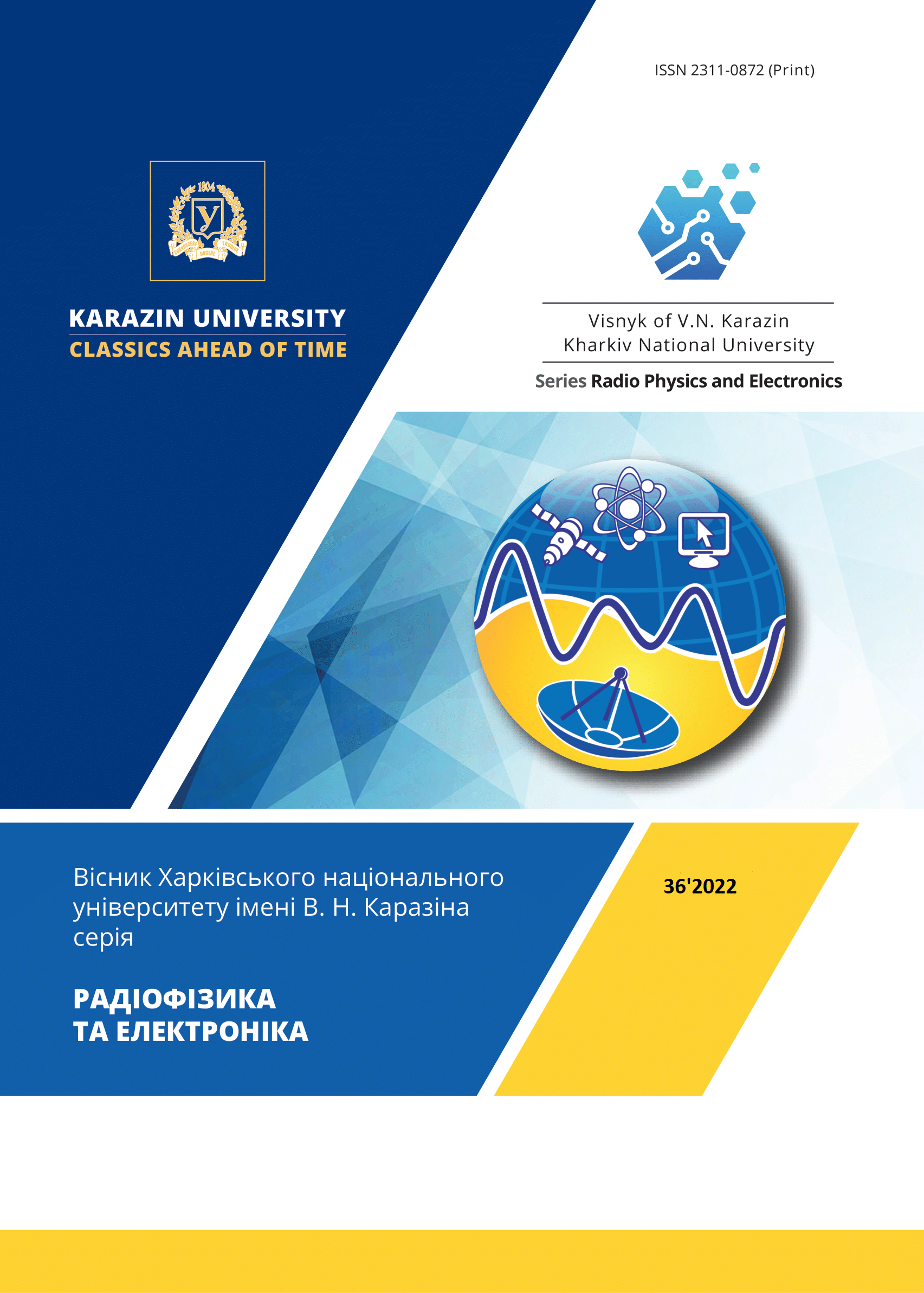H-polarized plane wave scattering by graphene strip grating on top of a dielectric substrate
Abstract
Relevance. Graphene is relatively new material which properties can be controlled dynamically under external influence by applying electrostatic or magnetostatic field. Also graphene can absorb electromagnetic field. Graphene strips with substrate can be applied in tunable devices such as antennas, frequency-selective surfaces, filters, absorbers, etc.
The purpose of the work is the development of rigorous methods based on the method of singular integral equations on graphene strip gratings with dielectric substrate, study of electrodynamic properties of the structure.
Materials and methods. To solve the diffraction problem of plane wave by the finite system of graphene strips placed on top of dielectric substrate we use the method of singular integral equations. The field scattered by the structure is expressed in terms of on unknown function, which has sense of Fourier amplitude. From boundary conditions on graphene strips and at the vacuum-dielectric interface the dual integral equations are obtained, which are reduced to the singular integral equation with additional conditions on the system of segments relatively unknown derivative of the currents density on the strips. The solution is obtained by the Nystrom-type algorithm. The kernel-function of the singular integral equations can have singularities in the form of poles at the points, which correspond to the propagation constants of the natural waves of dielectric waveguide. To eliminate the singularities we use the regularization procedure.
Results. The singular integral equation with additional conditions is obtained. It is shown that the structure under study can support various resonances: plasmon resonances, grating-mode resonances, and resonances near the Rayleigh anomaly. The position of plasmon resonances on the frequency axis can be controlled dynamically by applying electrostatic field. The first plasmon resonance is the most pronounced.
Conclusion. The rigorous solution of the H-polarized plane wave scattering by the graphene strip grating placed on top of the dielectric substrate is obtained with the use of the method of singular integral equations. The maxima of frequency dependences of the total scattering and absorption cross sections correspond to plasmon resonances. Near the grating-mode resonance, growth in the power of the natural waves of the dielectric waveguide is observed. However their excitation is noticeable for relatively thick substrate.
Downloads
References
2. Depine RA. Graphene optics: Electromagnetic solution of canonical problems. IOP Publishing. 2016.
3. Hanson GW. Dyadic Green’s functions and guided surface waves for a surface conductivity model of graphene. Journal of Applied Physics. 2008; 103: 064302. https://doi.org/10.1063/1.2891452
4. Asgari S, Granpayeh N. Tunable mid-infrared refractive index sensor composed of asymmetric double graphene layers. IEEE Sensors J. 2019; 19(14,15): 5686–5691. https://10.1109/JSEN.2019.2906759
5. Xu N, Chen J, Wang J, Qin X, Shi J. Dispersion HIE-FDTD method for simulating graphene-based absorber. IET Microwaves, Antennas & Propagation. 2017; 11(1): 92–97. https://doi.org/10.1049/iet-map.2015.0707
6. Guo Y, Zhang T, Yin WY, Wang XH. Improved hybrid FDTD method for studying tunable graphene frequency-selective surfaces (GFSS) for THz-wave applications. IEEE Trans THz Sci Technol. 2015; 5: 358–367.
7. Moharrami F, Atlasbaf Z. Simulation of multilayer graphene–dielectric metamaterial by implementing sbc model of graphene in the HIE-FDTD method. IEEE Trans Antennas Propagat. 2020; 68(3): 2238–2245. https://10.1109/TAP.2019.2948505
8. Dukhopelnykov SV, Lucido M, Sauleau R, Nosich AI. Circular dielectric rod with conformal strip of graphene as tunable terahertz antenna: interplay of inverse electromagnetic jet, whispering gallery and plasmon effects. IEEE J of Sel Topics in Quantum Electron. 2021; 27(1): 4600908. https://10.1109/JSTQE.2020.3022420
9. Shapoval OV, Nosich AI. Bulk refractive-index sensitivities of the THz-range plasmon resonances on a micro-size graphene strip. J Phys D: Appl Phys. 2016; 49(5): 055105. https://doi.org/10.1088/0022-3727/49/5/055105
10. Kaliberda ME, Lytvynenko LM, Pogarsky SA. THz waves scattering by finite graphene strip grating embedded into dielectric slab. IEEE J of Quantum Electron. 2020; 56(1): 8500107. https://10.1109/JQE.2019.2950679
11. Lifanov IK. Singular Integral Equations and Discrete Vortices. Utrecht: VSP, 1996.
12. Gandel’ YuV, Polyanskaya TS. Systems of singular integral equations of certain mixed boundary-value problems of mathematical physics. J Math Sci. 1990; 48: 144–152.
13. Yevtushenko FO, Dukhopelnykov SV, Nosich AI. H-polarized plane-wave scattering by a PEC strip grating on top of a dielectric substrate: analytical regularization based on the Riemann-Hilbert problem solution. J of Electromag Waves Applic. 2020; 34(4): 483–499. https://doi.org/10.1080/09205071.2020.1722258




